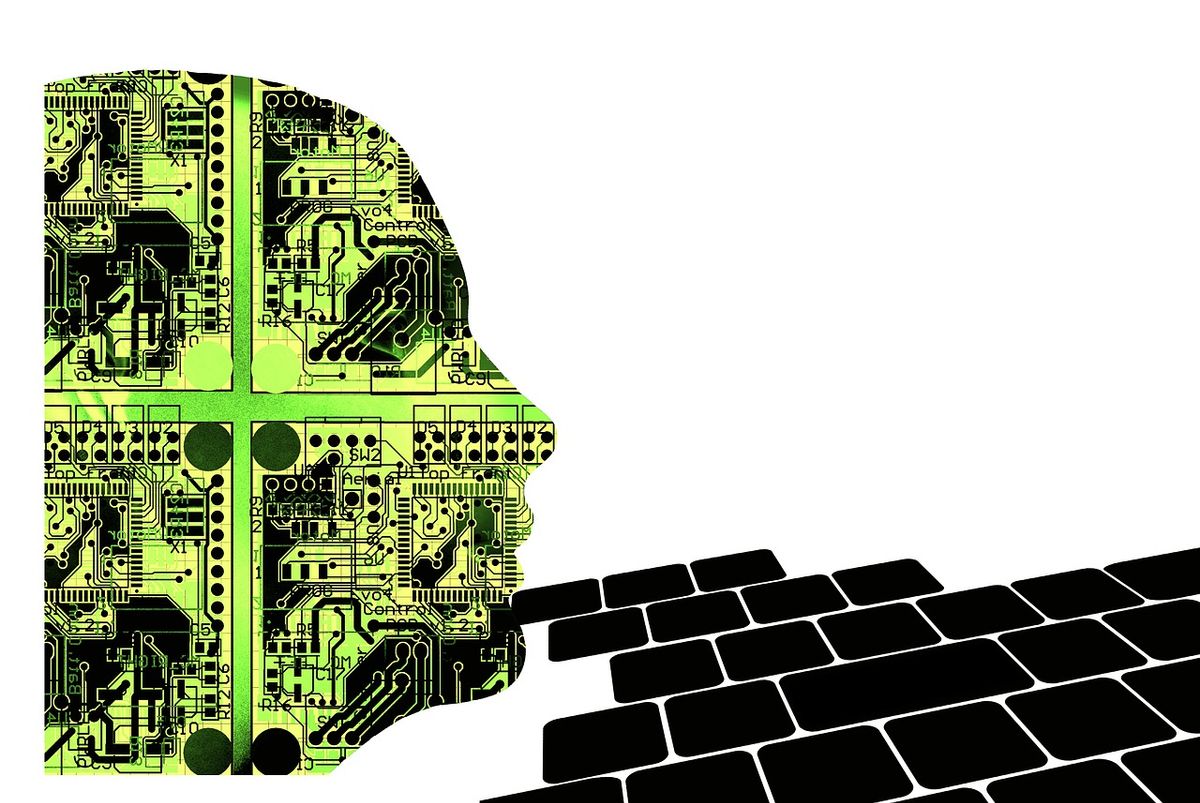In ‘Exploring the Frontier: Latest Breakthroughs in Artificial Intelligence,’ we delve into the most significant advancements that are redefining the capabilities of AI. From multimodal systems that enhance machine perception to the creative prowess of generative AI, and from the synthesis of intelligence with robotics to the quantum leaps in computing, this article provides a comprehensive overview of the cutting-edge technologies that are shaping the future. Additionally, we explore how AI is revolutionizing cybersecurity, providing robust digital defenses against evolving threats. Join us as we uncover the transformative impact of these AI breakthroughs in various sectors and their implications for society.
Key Takeaways
- Multimodal AI is advancing machine perception to human-like levels, enabling more intuitive human-machine interactions and diverse real-world applications.
- Generative AI is not only transforming content creation with unprecedented creativity but also raising important questions about intellectual property and ethics.
- Embodied AI brings together AI and robotics, leading to the development of autonomous agents that can operate effectively in complex, real-world environments.
- Quantum AI represents a paradigm shift in computing power, offering new possibilities in research and industry, and necessitating preparation for its widespread impact.
- AI in cybersecurity is becoming indispensable, providing advanced threat detection and response while navigating the delicate balance between security and privacy.
Multimodal AI: Bridging Human and Machine Perception

Understanding Multimodal AI Capabilities
Multimodal AI represents a significant leap in artificial intelligence, as it processes and interprets multiple data types simultaneously. It relies on data fusion techniques to integrate disparate data types, creating a comprehensive understanding that mirrors human perception. This capability allows AI to analyze text, images, and sounds in unison, leading to more nuanced and context-aware interpretations.
The capabilities of multimodal AI can be summarized as follows:
- Enhanced sensory perception, akin to human multi-sensory experiences
- Improved decision-making through integrated data analysis
- Greater accuracy in tasks involving complex data interpretation
Multimodal AI’s ability to process diverse data streams in real-time opens up new possibilities for human-machine interaction and cognitive computing.
Despite its promise, multimodal AI faces challenges such as the need for large datasets and sophisticated algorithms to manage and interpret the integrated data effectively. As the technology advances, it is poised to transform industries by enabling more natural and intuitive interactions between humans and machines.
Real-World Applications and Case Studies
The integration of Multimodal AI into clinical settings has marked a significant milestone in healthcare. The FDA’s adoption of real-world evidence (RWE) for evaluating AI medical devices exemplifies this progress. RWE, derived from sources like electronic health records, enhances our understanding of AI tools’ performance in actual clinical environments.
Multimodal AI’s potential is not limited to healthcare. It has also revolutionized the way we approach complex problems in various domains.
In the realm of materials science, AI has enabled the discovery of new materials that had been previously overlooked, promising advancements in sectors like renewable energy and medical engineering. Similarly, AI’s prowess in diagnosing rare diseases by analyzing genetic data demonstrates its capability to support clinicians in making accurate diagnoses, particularly for conditions that are rare or not well-understood by the medical community.
The book AI Native Enterprise highlights the transformative impact of AI in business, emphasizing the importance of strategic implementation, data management, and cultivating an AI-centric organizational culture.
Challenges and Future Directions
The journey of Multimodal Artificial Intelligence is marked by both promise and challenges. While the integration of multimodal AI into clinical care holds the potential to revolutionize healthcare, it also presents significant hurdles. One of the primary challenges is the need for robust systems to monitor AI medical devices post-deployment. Ensuring their continuous effectiveness and reliability demands vigilant surveillance and a collaborative effort among regulators, industry professionals, and healthcare providers.
The potential for AI to accelerate scientific discovery in medicine is immense, yet the path is fraught with ethical, social, and regulatory complexities that must be navigated with care.
Looking ahead, the future of multimodal AI in medicine is poised to make substantial contributions to scientific research, diagnostics, and patient care. However, addressing the dynamic and complex nature of evolving health challenges, such as HIV, requires not only technological advancements but also a concerted effort to overcome the ethical and regulatory obstacles that lie ahead.
Generative AI: Pioneering Creative Frontiers

The Rise of Generative Models
Generative artificial intelligence (GenAI) has emerged as a transformative force in technology, ushering in a new era of creativity and innovation across various industries. With the advent of advanced neural networks, these AI systems can now generate new content, from realistic images to coherent text, that is often indistinguishable from human-created work.
Investments in GenAI have seen a remarkable uptick, with a reported $25.2 billion poured into the sector despite a broader decrease in AI private investment in 2023. This influx of capital underscores the confidence in GenAI’s potential and its perceived value by major industry players.
The ability of GenAI to enhance productivity and foster innovation is not just a promise but a rapidly unfolding reality. Its applications range from automating design processes to personalizing customer experiences, and the implications for future growth are substantial.
Here is a snapshot of the funding landscape for generative AI:
| Company | Funding Raised |
|---|---|
| OpenAI | $10 billion |
| Hugging Face | $2 billion |
| Anthropic | $1.5 billion |
| Inflection | $1.2 billion |
The figures above reflect the significant investments made by some of the leading entities in the generative AI space, signaling a robust and growing market.
Impacts on Content Creation and Intellectual Property
The advent of Generative AI has ushered in a new era for content creation, transforming the landscape of intellectual property. This technology enables the generation of original works, from literature to visual arts, raising questions about authorship and copyright ownership.
- Content Creation: AI can now write articles, compose music, and create artwork, challenging traditional notions of creativity.
- Intellectual Property: Determining the rights to AI-generated content is complex, as it blurs the line between human and machine contributions.
- Monetization: The commercialization of AI-generated content requires new models for revenue sharing and copyright management.
The implications for intellectual property law are profound, as existing frameworks may not adequately address the nuances of AI-generated works. The need for updated regulations that recognize the collaborative nature of human-AI creation is becoming increasingly apparent.
Ethical Considerations in Generative AI
The advent of Generative AI has ushered in a new era of possibilities, but it also presents a complex web of ethical considerations. At the forefront is the need for transparency in AI systems, ensuring that the processes and outputs are understandable and explainable to users. This transparency is crucial for maintaining trust and accountability, especially when AI-generated content influences public opinion or decision-making.
The ethical landscape of Generative AI is not just about the technology itself, but also about its broader societal implications. Issues such as environmental impacts, accessibility, and rights management must be carefully navigated to prevent exacerbating existing inequalities.
Another pivotal concern revolves around creatorship and academic integrity. As AI becomes capable of producing original content, the lines between human and machine creativity become blurred. Determining the rightful ownership of AI-generated works, and addressing copyright concerns, is essential for fostering a responsible ecosystem of innovation.
Lastly, the ethical deployment of Generative AI requires a balanced approach to data privacy and intellectual property rights. Researchers and developers must work together to establish guidelines that protect individuals’ rights while promoting the advancement of AI technologies.
Embodied AI: The Synthesis of Intelligence and Robotics

Exploring the Concept of Embodied Intelligence
Embodied AI represents a transformative approach to artificial intelligence, where the focus shifts from purely digital realms to the physical world. Embodied intelligence is about creating machines that can interact with their environment in a manner akin to living organisms. This involves a synergy of sensors, actuators, and AI algorithms that enable robots to perceive, understand, and navigate their surroundings autonomously.
The goal of the Embodied AI workshop is to bring together researchers from various fields to share and discuss the latest advancements. Here, the cross-pollination of ideas from computer vision, language, graphics, and robotics is crucial for pushing the boundaries of what these intelligent systems can achieve.
The integration of Embodied AI into various sectors promises to revolutionize how we interact with technology, making it more intuitive and responsive to our physical world.
Key areas of focus include:
- Enhancing sensory perception
- Improving cognitive processing
- Advancing motor functions
- Developing adaptive learning capabilities
Advancements in Autonomous Agents
The realm of Artificial Intelligence is witnessing a surge in the capabilities of autonomous agents, marking a significant milestone in AI development. These agents are now able to perform complex tasks with greater autonomy and precision, reflecting the progress reported by TechTarget.
Autonomous AI agents are not just a concept but a rapidly evolving reality. They are being designed to navigate environments, make decisions, and learn from interactions without constant human oversight. This evolution from simple task execution to more sophisticated, human-like intelligence is a testament to the advancements in AI technologies.
The integration of AI into various sectors is revolutionizing the way we approach problem-solving and innovation. Autonomous agents are at the forefront of this transformation, offering new possibilities for efficiency and productivity.
The following table highlights some of the key areas where autonomous agents have made significant progress:
Integrating Embodied AI into Society
The integration of embodied AI into society marks a transformative step in how we interact with technology. These AI systems, which combine cognitive abilities with physical presence, are poised to revolutionize various sectors, from healthcare to manufacturing.
The seamless incorporation of embodied AI agents into daily life hinges on their ability to exhibit social intelligence and navigate complex social environments.
However, the transition also presents significant challenges. Ensuring these systems operate safely and ethically within social contexts is paramount. Below is a list of key considerations for successful integration:
- Development of robust safety protocols
- Establishment of ethical guidelines
- Enhancement of AI’s social intelligence
- Creation of interoperability standards
- Fostering public acceptance and trust
As we advance the capabilities of AI agents, addressing the technical challenges and societal implications is crucial for harmonious coexistence.
Quantum AI: Unleashing New Potentials in Computing

The Convergence of Quantum Computing and AI
The fusion of quantum computing and artificial intelligence heralds a new era of technological innovation. Quantum AI is set to redefine the landscape of problem-solving by leveraging the unique capabilities of quantum mechanics. This convergence promises to accelerate AI’s ability to analyze data, optimize systems, and create more sophisticated algorithms.
- Quantum computing brings powerful advances in combinatorial optimizing, such as finding the most efficient allocation of resources and supply chain management.
- The potential for quantum AI to solve complex problems far more quickly than classical computers could lead to breakthroughs in various fields, from drug discovery to financial modeling.
- Researchers and developers are working to harness quantum AI for real-world applications, despite the challenges of integrating these two cutting-edge technologies.
The synergy between quantum computing and AI is not just theoretical; it is rapidly moving towards practical, transformative applications that could reshape entire industries.
Quantum AI in Research and Industry
The integration of quantum computing with artificial intelligence is heralding a new era in both research and industry. Quantum AI is set to redefine the boundaries of data processing and machine learning, offering unprecedented computational power to solve complex problems. In research, scientists are leveraging quantum AI to accelerate drug discovery and material science breakthroughs.
- In the pharmaceutical industry, quantum AI is being used to model molecular interactions at an atomic level, which can drastically reduce the time required for drug development.
- Financial institutions are exploring quantum algorithms to optimize trading strategies and manage risk more effectively.
- Tech giants are investing heavily in quantum AI research, aiming to develop the next generation of AI algorithms that can outperform classical machine learning models.
The promise of quantum AI extends beyond sheer computational speed; it offers a paradigm shift in how we approach problem-solving in various fields.
The commercialization of quantum AI technologies is still in its infancy, but the potential applications are vast and varied. As the technology matures, it will be crucial to establish benchmarks and standards to evaluate and guide its development, ensuring that its benefits are realized across different sectors.
Preparing for the Quantum AI Revolution
As we stand on the brink of the Quantum AI Revolution, it is crucial to understand the steps necessary for successful integration. The profound implications of integrating quantum computing with AI—quantum AI—beckon a significant transformation, especially in the realm of Industry 4.0. To harness the full potential of quantum AI, organizations must focus on strategic approaches that encompass skill development, infrastructure readiness, and ethical considerations.
The synergy between quantum computing and AI will unlock unprecedented computational capabilities and problem-solving efficiencies. This synergy is not just an incremental improvement but a fundamental leap forward in technology.
To prepare for this leap, the following steps are essential:
- Developing a quantum-ready workforce through education and training.
- Investing in quantum computing infrastructure and research.
- Establishing ethical guidelines for quantum AI deployment.
- Fostering partnerships between academia, industry, and government.
By taking these proactive measures, we can ensure a smooth transition into the quantum AI era, mitigating risks and maximizing benefits for society at large.
AI in Cybersecurity: Fortifying Digital Defenses

Leveraging AI for Threat Detection and Response
The integration of Artificial Intelligence (AI) in cybersecurity is revolutionizing how threats are detected and responded to. AI systems are now capable of analyzing vast amounts of data to identify patterns and anomalies that may indicate a cyber threat. This proactive approach to security is a game-changer, allowing for real-time detection and rapid response to potential risks.
- AI-driven threat intelligence platforms can sift through global security feeds, identifying emerging threats before they reach critical systems.
- Machine learning algorithms are employed to adapt and improve threat detection over time, learning from past incidents to predict and prevent future attacks.
- Automated response mechanisms enable systems to react instantly to detected threats, often without the need for human intervention.
The ability of AI to process and analyze data at scale is mission-critical to cybersecurity. It empowers security software and providers to take a more intelligent approach to virus and malware detection, enhancing the overall security posture.
AI-Powered Cybersecurity Solutions
In the dynamic realm of cybersecurity, AI tools are becoming indispensable allies. These tools are designed to adapt and evolve, offering solutions that can keep pace with the ever-changing tactics of cyber threats. AI’s ability to analyze vast amounts of data and identify patterns makes it a powerful force in the fight against digital adversaries.
AI is not just a technological advancement; it’s a paradigm shift in how we protect our digital ecosystems.
The integration of AI into cybersecurity strategies has led to the development of sophisticated systems capable of real-time threat detection and automated response mechanisms. This proactive approach to security is a game-changer, significantly reducing the time between threat identification and resolution.
Here’s a glimpse at how AI is revolutionizing cybersecurity solutions:
- Automated Threat Detection: AI systems can monitor networks 24/7, instantly recognizing potential threats.
- Predictive Analytics: Leveraging historical data, AI can predict and preemptively block attack vectors.
- Incident Response: AI-driven tools can orchestrate rapid response to security incidents, minimizing damage.
- User Behavior Analytics: By understanding normal user behavior, AI can detect anomalies that may indicate a breach.
As we continue to witness the rollout of initiatives like Google’s AI Cyber Defense Initiative, it’s clear that the commitment to advancing AI-powered security is stronger than ever. The promise of AI in cybersecurity is not just in its current capabilities but also in its potential to evolve and adapt alongside the threats it is designed to combat.
Balancing Security and Privacy in an AI-Driven World
In the era of AI-driven cybersecurity, the equilibrium between robust security measures and the sanctity of user privacy is a delicate one. The integration of AI into cybersecurity strategies must be navigated with a clear ethical compass, ensuring that the benefits of enhanced protection do not come at the expense of individual rights.
- AI systems require access to vast amounts of data, making data governance a critical concern.
- Transparency in AI operations and user data handling is essential for maintaining trust.
- The ability to opt-out and have control over one’s personal data is a fundamental user right.
As AI continues to evolve, establishing comprehensive standards and best practices for data privacy and security will be paramount. This includes creating clear policies for data sharing, storage, and use, as well as ensuring that AI systems are designed with fairness and accountability in mind.
The task ahead is not a simple one, as it involves a complex interplay of technological innovation, legal frameworks, and societal values. It is a collective responsibility that requires the concerted efforts of healthcare organizations, policymakers, technology providers, and the public at large.
As the digital landscape evolves, so does the sophistication of cyber threats. AI in Cybersecurity is our beacon of hope, offering advanced solutions to fortify our digital defenses. Harness the power of cutting-edge AI tools and stay ahead of potential threats by visiting our website. Dive into a world of insightful blogs, updates, and the latest AI tools that can transform your cybersecurity strategy. Don’t wait for a breach to happen; take action now and ensure your digital safety with the best AI resources at your fingertips.
Conclusion
As we stand on the brink of a new era in artificial intelligence, the breakthroughs we’ve explored in this article are not just incremental steps but giant leaps forward. From multimodal AI that rivals human perception to quantum AI that promises unprecedented computational power, the landscape of AI is evolving at a breathtaking pace. The implications of these advancements are profound, touching every aspect of our lives from healthcare to cybersecurity, and from education to creative industries. As AI continues to surpass human benchmarks and reshape industries, it is imperative that we navigate this frontier with a keen eye on ethical considerations and a commitment to sustainable development. The future of AI is here, and it holds both immense promise and significant responsibility for us to wield its power wisely.
Frequently Asked Questions
What are the most groundbreaking new AI technologies in 2024?
The most groundbreaking new AI technologies in 2024 include multimodal AI, generative AI, embodied AI, federated learning, sustainable AI, quantum AI, and AI applications in cybersecurity, healthcare, education, and creative industries.
How is AI reshaping industries and what are some real-world use cases?
AI is reshaping industries by improving efficiency, automating processes, and enabling new services. Real-world use cases include voice recognition systems like Alexa, AI-assisted software engineering, medical AI for diagnostics, and AI in quantum computing.
What are the ethical considerations in the development and use of generative AI?
Ethical considerations in generative AI involve the potential misuse for creating deepfakes, intellectual property rights issues with AI-generated content, and the impact on creative industries and jobs.
How is quantum AI expected to revolutionize artificial intelligence?
Quantum AI is expected to revolutionize AI by leveraging quantum computing principles to solve complex problems much faster than classical computers, potentially leading to breakthroughs in optimization, materials science, and cryptography.
What role does AI play in cybersecurity, and how does it balance with privacy concerns?
AI plays a crucial role in cybersecurity by detecting and responding to threats more efficiently. However, there is a need to balance security with privacy concerns, ensuring that AI tools do not infringe on individual rights or data protection laws.
How has AI progressed in the last decade in terms of tasks it can perform?
Over the last decade, AI has made significant progress, surpassing human performance on several benchmarks. AI systems have evolved to effectively classify images, produce coherent text, understand language, and perform visual reasoning.




